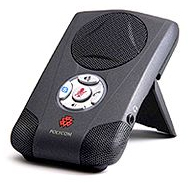Introduction
What? You haven’t finished your holiday shopping yet? Well, in case you’ve been considering a networking-related gift, there are many products that are sure to please your giftee. This guide to networking gifts is based on hands-on experience with products reviewed throughout the year, and links are included to the related reviews and articles for your further exploration. You’ll also find some tips on what not to buy, a bit unusual for a gift guide, perhaps, but equally important.
You all know the drill and why you’re here, so let’s just get right to it.
Wireless Networking
Wi-Fi continues its march toward ubiquity despite crowded airwaves, flaky performance, over-hyped products and generally high buyer dissatifaction. But if you’re determined to try to free yourself or a loved one from his or her cabled shackles, we have a few things to suggest.
First, stay away from any products using draft 802.11n technology. Despite all the hype to the contrary, this standard is far from done and many significant changes are still coming. As our reviews have shown, these products generally promise long, deliver short and will interfere with nearby networks. And if that isn’t enough, only one manufacturer—ASUS—is guaranteeing upgradability to the final 802.11n spec when it is released sometime next year.
In their efforts to differentiate themselves, manufacturers have come up will all sorts of permutations on the “N” theme, making it difficult for the average consumer to know what he or she is really buying. So here’s a partial list of draft 11n “marketingese” so that you know what to avoid:
- RangeMax NEXT (Netgear)
- RangeBooster N (D-Link)
- N1 (Belkin)
- Wireless N-Draft (Trendnet)
- Wireless-N (Linksys)
With that said, you’ll get the best combination of range and performance from products using MIMO chipsets from Airgo. Airgo’s first-generation “True MIMO” chipset is at the heart of the Belkin Pre-N and other routers. But instead of the Belkin, which is short on routing features, a better choice would be the Netgear WPNT834 RangeMax 240. Although the 240 uses Airgo’s third-generation chipset that includes “ACE” technology, which can interfere with neighboring 802.11b/g networks, you can shut it off and still have a product that will keep both you and your wireless neighbors happy.
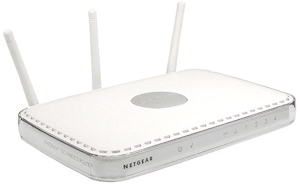
Netgear WPNT834 RangeMax 240 Wireless Router
Wireless Networking – more
If this is your first try at wireless networking and want to raise your odds of having a happy experience, you first need to know what you’re dealing with. If you already have a wireless-equipped notebook or computer, you should use the wireless software utility (or Win XP’s built-in Wireless Zero Configuration tool) to see if you can detect any existing networks. Your odds of wireless success are good if you can see no more than two other wireless networks because you can set up your network to use one of the three non-overlapping channels (1, 6, 11) that isn’t being used.
If you’d rather have something more portable and usable for spur-of-the-moment wireless detecting than hauling out and booting up a wireless notebook, how about a Wi-Fi finder? Derek Boiko-Weyrauch liked the ZyXEL AG-225H And TRENDnet TEW-509UB twins.
For around $60 you get a flash-drive-sized detector that will sniff out 802.11a, b and g networks and display SSID, encryption, signal strength information on a miniature LCD screen. And as an added bonus, the devices are fully-functional 802.11a/b/g USB 2.0 wireless adapters. The main weakness I’ve found in the months that I’ve used one is that the non-backlit screen is hard to see in low-light conditions.
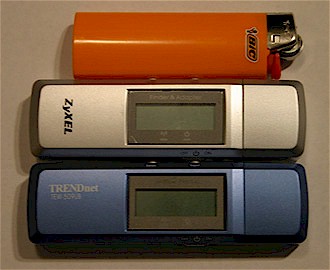
Wi-Finding Duo: ZyXEL AG-225H And TRENDnet TEW-509UB
But neighboring wireless LANs are the only thing that can mess up your wireless network. And cordless phones, microwave ovens and other sources of 2.4 GHz energy won’t be picked up by a wireless adapter. Fortunately, for $99, the Wi-Spy Spectrum Analyzer can give you a complete view of what’s going on in your wireless airwaves.
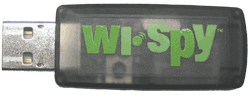
Wi-Spy $99 Wi-Fi Spectrum Analyzer
LANs and Routers
Sometimes a gift is more practical than fun, sorta like the underwear or socks that you used to get as a kid. I guess you can think of routers, switches, cables and Ethernet cards as the underwear of networking—not the most fun stuff, but definitely necessary.
Manufacturers have been slow to make gigabit switches standard in all routers; even the whizzyest draft 11n stuff still mostly has 10/100 switches. So if you’re tired of the time it takes to move your ripped or downloaded music and video files around, a gigabit switch might be just the thing to reward yourself with. Although the percentage difference between 10/100 and 10/100/1000 switches is still rather large, the actual cost is well within reason. And since most new computers now come with gigabit LAN ports as standard, you might as well take advantage of them.
The main catch to consumer gigabit switches is the lack of jumbo frame capability. Netgear revised its GS108 8 port switch last year to include jumbo frame capability, but didn’t renumber the product and was slow to flush old inventory out of the channel, frustrating many consumers. It should be safe to buy one now, but if you’re buying from an Internet retailer, check its return / exchange policies in case you get one that doesn’t say jumbo frames on the box.

Netgear GS108 8 port gigabit switch
Since all of the magic is baked into chips that everyone uses, there is little to differentiate one consumer gigabit switch from another. So if you don’t care about jumbo frames or your computers aren’t fast enough to really take advantage of them, then shop on price and brand preference if you have one. Gigabit NICs can have a bit of differentiation in the properties or controls that they expose to users and any utilities they include. I use an Intel Pro/1000 MT gigabit adapter which exposes more properties than I care to mess with, but there are plenty of other NICs to choose from.
Wired-only routers might seem boring when compared to their wireless cousins that networking manufacturers love to hype, but plenty of them toil quietly away keeping us connected. But as many filesharing devotees have discovered, ol’ faithful might not be able to keep up with the higher download speeds that have become more common or the multiple simultaneous connections required by filesharing and gaming applications.
Fortunately, it doesn’t cost a lot to replace a poky old router these days. Our Cheap Router Roundup sized up six routers costing $25 or less and found some surprisingly good products from lesser-known companies. You may have to hunt around for it online, but the AirLink101 AR504 came in at the top of the heap with the best combination of features and performance. If you’re looking for something in a bit more of a brand name, just use our Router Charts to compare up and download speeds as well as the number of simultaneous connections supported.

AirLink101 AR504
Alternative Networking
If wireless isn’t your thing, or you’ve tried it and found that it won’t work in your environment, there are alternatives to getting out your drill and stringing good old CAT5/6 cable for wired Ethernet. Products that use your home’s electric or phone wiring have been around for years, but have generally been avoided by consumers given their relatively slow speeds. However, satellite, cable and telco service providers now feel your pain, since they also want their services to reach every room of your home. And whenever there is a huge pile of money to be made, you can rest assured that the big guys will keep pursuing a solution.
As a result, a wave of new “alternative networking” products aiming to use your home’s existing wiring is coming, this time with speeds capable of supporting multiple “triple play” data streams for video / music, voice and data. Unfortunately, service providers are doing selective roll-outs of most “alternative” technologies since there are still performance limitations and bugs to be worked out. The only “alternative networking” products generally available to consumers use power line wiring, but the story there isn’t pretty, with two alternative incompatible technologies—HomePlug and DS2—battling it out.
The upshot is that you should proceed with caution if powerline networking products are on your holiday shopping list. Products touting “200 Mbps” speeds use technology from DS2, which can neither interoperate nor coexist with products bearing the HomePlug moniker. Products using DS2 technology include D-Link’s DHP-301 and Netgear’s HDX101.
85 Mbps on the box indicates HomePlug Turbo technology, which is interoperable with earlier HomePlug standards. In the HomePlug Turbo Adapter Round-Up I liked Netgear’s XE104, which includes a four port 10/100 switch in a compact wall-pluggable design.
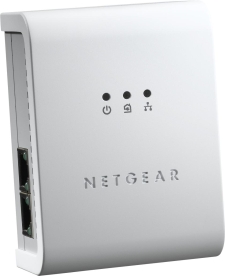
Netgear XE104 85 Mbps Wall-Plugged Ethernet Switch
But shortly after you read this, the first HomePlug AV products will be appearing. Like DS2-based products, HomePlug AV gear also advertises 200+ Mbps speeds, but is supposed to be compatible with all existing HomePlug gear. If it ships as planned, ZyXEL’s PLA-400 HomePlug AV PowerLine Ethernet adapter should be out this month at an MSRP of $94. Since I haven’t tested HomePlug AV I can’t vouch for any of its claims. But if the performance of DS2 gear is any indication, I expect best-case usable throughput between 50 and 80 Mbps.
Networked Storage
This has been quite a year for Networked Storage products, which are challenging wireless gear for the title of most desired product. The main driver has been the need to house our ever-increasing digital media collections which are being fed by digital cameras, iTunes and a host of other content acquisition options.
The good news is that the latest round of products has better performance, more user-friendly interfaces, and frequently include built-in media servers, backup features and SATA drives and interfaces. There are also more options in the BYOD (Bring Your Own Drive/Disk) category, which allow you to put that drive left over from your last system upgrade to good use. BYOD products also allow you to easily replace a failed drive, which can be quite painful with some diskful NASes.
More good news is that manufacturers are recognizing that it’s impractical to regularly back up hundreds of gigabytes of data (or at least to expect most of us to actually do it) and are including automatic backup features and RAID capabilities. RAID automatically reads and writes data to multiple hard drives (you need at least two) in ways that allow data to remain intact when one drive eventually goes belly up.
If your budget is large along with your storage needs, then the Infrant ReadyNAS NV is the way to go. It can handle up to four 750GB drives for a total storage capacity of almost 3TB (that’s Terabytes) in its petite, stylish enclosure and keep all that data safe with its flexible RAID features. The user interface is top-notch, although a bit daunting for newbies given all of its options. But Infrant’s X-RAID (Expandable RAID) technology allows you to start with only one drive and automatically reconfigures itself without losing existing data as you add more drives. Multiple media servers are included, as is a client backup utility that doesn’t require any software to be installed on clients. The newer NV+ adds an LCD front-panel display and bundles copies of EMC’s Retrospect for another client backup alternative.
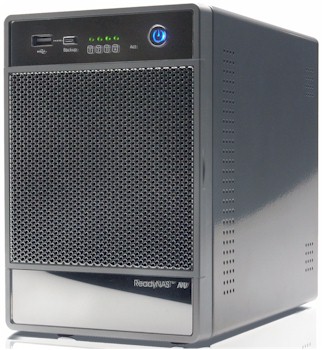
Infrant ReadyNAS NV NAS
If your budget is more modest, you may want to consider dual-drive products that support RAID 1 instead. Two products with good combinations of price and performance are HP’s Media Vault and D-Link’s DNS-323. Both are dual-SATA drive products with RAID 1 capability, built-in media serving and gigabit LAN interfaces.
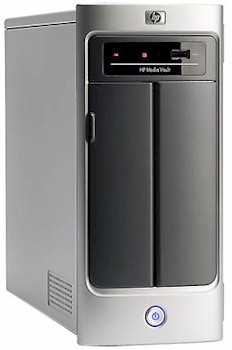
HP mv2010 Media Vault
The DNS-323 is a full BYOD device and the mv2010 version of the HP product comes with one 300 GB drive and lets you add another via a handy slide-in tray. Both rate high in performance in our NAS Charts and will have full reviews coming up soon. The HP will set you back around $350 and the D-Link will be about $230 (sans drives) when it hits the stores shortly.
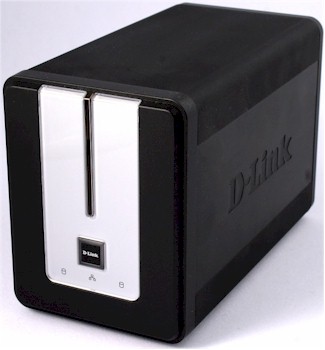
D-Link DNS-323 2-Bay Network Storage Enclosure
Multimedia – Video
As our digital media libraries grow, so does the desire to not be stuck next to a computer to listen or watch them. Limitations imposed by various Digital Rights Management (DRM) schemes continue to be a big drag on this product category for legally-purchased media, so many users resort to building their libraries by ripping and downloading. For video files, however, the ability of products to handle the wide array of file formats and bit rates is just as large a problem.
Two media players that Jim Buzbee liked are Netgear’s EVA700 and D-Link’s DSM-520. Both support 1080i HD output via component video outputs, but the DSM-520 also sports an HDMI port. The EVA700 gets the nod for widest video format support and ability to play MP3 files that include album art, but has an unexciting user interface with inconsistent screen-saver feature.
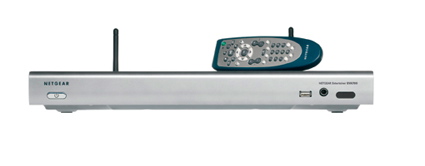
Netgear EVA700 Digital Entertainer
The DSM-520 has a more attractive look and feel, but chokes on MP3 files with album art and has more limited video format support. No streaming media player does it all (not at least yet), but if you want to jump in now, these are two good choices.
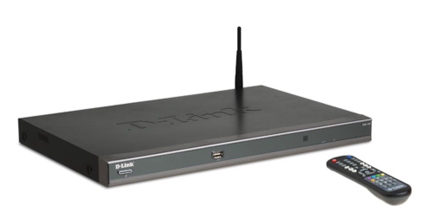
D-Link DSM-520 Medialounge Wireless HD media player
Multimedia – Audio
The picture is much brighter for networked audio players. A few products have managed to bypass DRM issues by running an application on a Windows PC that intercepts the music stream after DRM decrypting. Mike Baggaley liked Logitech’s Wireless DJ which was able to wirelessly stream DRM’d and unlocked MP3, AAC, and WMA files with ease using a self-configuring Bluetooth network.
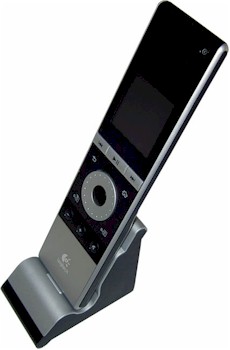
Logitech Wireless DJ
A perennial favorite is SlimDevices’ Squeezebox, which combines good looks and wide format support (MP3, WMA, FLAC, AAC, WAV and Ogg Vorbis) with the ability to access content directly from streaming servers. But the only DRM format it supports is Rhapsody’s subscription-based service. Infrant and SlimDevices (which is now part of Logitech) are jointly offering an NV / Squeezebox bundle for whole-house systems (pictured below) if your year-end budget range is above $1000.
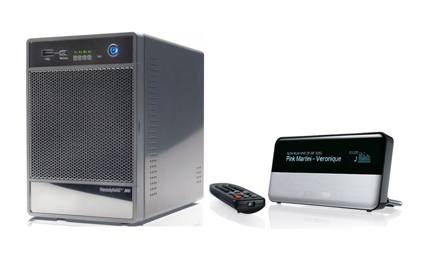
Infrant NV, SlimDevices Squeezebox bundle
But if you’re going to spend that much for a whole-house audio system, a better choice would be Sonos’ Digital Music System. While it also can’t play DRM-protected files, its wireless remote and multiple room capabilities provide a slicker user experience. You can choose from the original ZP100 ZonePlayer with built-in 50 W amplifier, or newer ZP80 which omits the amplifier for a smaller footprint and price.
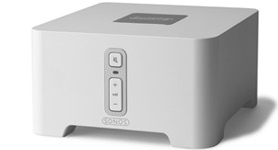
Sonos ZP80 ZonePlayer 80
VoIP
Again, I’ll start with what not to buy, which are any of the Wi-Fi Skype phones that finally hit the shelves a few months ago. The phones from SMC and Belkin are essentially the same, while Netgear’s SPH101 looks similar but uses a different hardware design that includes a speakerphone. The reason for my thumbs-down is that at between $150 – $200, they are too expensive for what they do, which is to let you make Skype voice calls while connected to an 802.11b or g wireless network. The big negatives are short and/or inconsistent battery life, inability to authenticate with any hotspot that requires you to launch a web browser to connect and no text chat capability.
A much better gift for a frequent Skyper—especially someone who uses Skype for business calls is Polycom’s Communicator speakerphone. It’s a snap to set up and provides excellent voice quality in both directions. At around $130, it’s a bit pricey, but well worth it.
